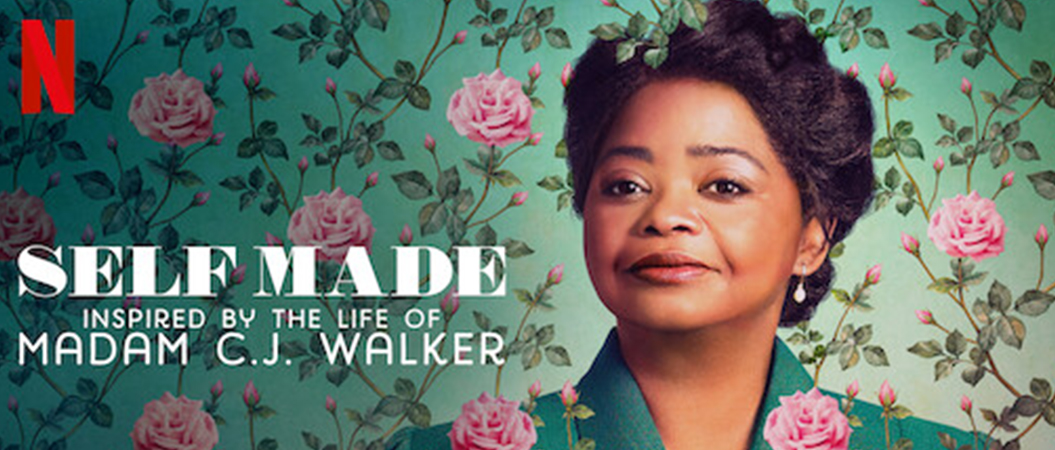Queen: The Amazing Life of Madam CJ Walker
23 December 1867 in a town called Delta. Former slaves and sharecroppers Owen and Minerva Breedlove toil away, barely at a subsistence level, in the harsh sun and humid heat of Louisiana. They continued to do the same work they used to do as slaves, knowing no other life, and two days before Christmas Minerva gives birth to a healthy baby girl, Sarah – the couple’s fifth child and the first one to be born free. This little baby girl, born into utter poverty in the South shortly following the Civil War, would become America’s very first female self-made millionaire… an icon whose work as entrepreneur and philanthropist would leave a powerful commercial, cultural and cosmetic legacy for the United States.
Hard Times, Early Marriage and Doing Laundry in St. Louis
The Breedlove’s had one more child after Sarah – but the hard work and poverty would take its toll… Sarah found herself orphaned at the age of seven. She moved in with her sister Louvinia and her brother-in-law. Life was harsh, and young Sarah had to work in the cotton fields to help support her family. At the age of 14, she married Moses McWilliams to escape the harsh treatment of her brother-in-law. She had her only child, Lelia (later known as A’Lelia Walker), in 1885. After Moses died in 1887, Sarah relocated to St. Louis, where three of her brothers worked as barbers. In St. Louis, she worked as a laundress, earning barely more than a dollar a day, while also attending public night school whenever possible.
The Birth of a Businesswoman
The pivotal moment in Walker’s life came as she struggled with hair loss, a common issue among African American women at the time due to harsh hair care practices and lack of proper grooming products. Seeking a solution, she experimented with home remedies and products from other black women entrepreneurs like Annie Turnbo Malone, from whom she also received employment. In 1905, Sarah moved to Denver, Colorado, and married Charles Joseph Walker, a newspaperman whose marketing and advertising expertise would later prove invaluable to her business. Adopting the name Madam C.J. Walker, she began to develop and market her own line of hair care products specifically designed for black women. Her “Walker System” included a variety of products and a method involving scalp preparation, lotions, and iron combs.
Madam Walker’s business acumen and innovative marketing strategies quickly set her apart. She travelled extensively, demonstrating her products and recruiting sales agents, often referred to as “Walker Agents.” These women were trained not only to sell Walker’s products but also to provide beauty treatments and educate customers about hair and scalp health. This network of agents played a crucial role in spreading the popularity of Walker’s products.

The tin of Madam CJ Walker’s Wonderful Hair Grower Formula
Public Domain from the Smithsonian
Indianapolis
In 1910, Walker moved her business headquarters to Indianapolis, Indiana, a central location that facilitated manufacturing and distribution. There, she built the Madam C.J. Walker Manufacturing Company, which included a factory, a hair and manicure salon, and a beauty school to train her agents. By 1917, the company employed several thousand women as sales agents, factory workers, and clerical staff.
Beyond her business success, Madam Walker was a committed philanthropist and social activist. She used her wealth and influence to support numerous causes and organizations dedicated to the advancement of African Americans and women. She made significant contributions to the NAACP, the National Conference on Lynching, and the YMCA.
In 1917, Walker organized the first national meeting of her sales agents in Philadelphia, which served as both a business conference and a forum for discussing issues facing the African American community. This event led to the establishment of the Madam C.J. Walker Hair Culturists Union of America, one of the first national organizations of businesswomen in the U.S.
Still Shining
Madam C.J. Walker’s death on May 25, 1919, from kidney failure, marked the end of an era but not the end of her influence. Her legacy continued through her daughter, A’Lelia Walker, who became a prominent figure in the Harlem Renaissance, a cultural movement that celebrated African American artistic and intellectual achievements.
Walker’s impact on the beauty industry and African American entrepreneurship is immeasurable. She not only created products that addressed the specific needs of black women but also provided economic opportunities for thousands of African American women, empowering them to achieve financial independence. Her business model and philanthropic efforts set a precedent for future generations of entrepreneurs.
In recent years, Walker’s life and legacy have been celebrated in various forms, including books, documentaries, and the Netflix series “Self Made,” inspired by her biography. These portrayals have helped to introduce her story to new audiences, ensuring that her contributions are recognized and remembered.
Madam C.J. Walker’s life is a remarkable narrative of perseverance, innovation, and dedication to justice. From her humble beginnings in rural Louisiana to becoming one of the most successful and influential African American entrepreneurs of her time, Walker’s story is an enduring source of inspiration. Her commitment to uplifting her community and her trailblazing achievements in business continue to resonate, reminding us of the power of vision and determination in the face of adversity.

